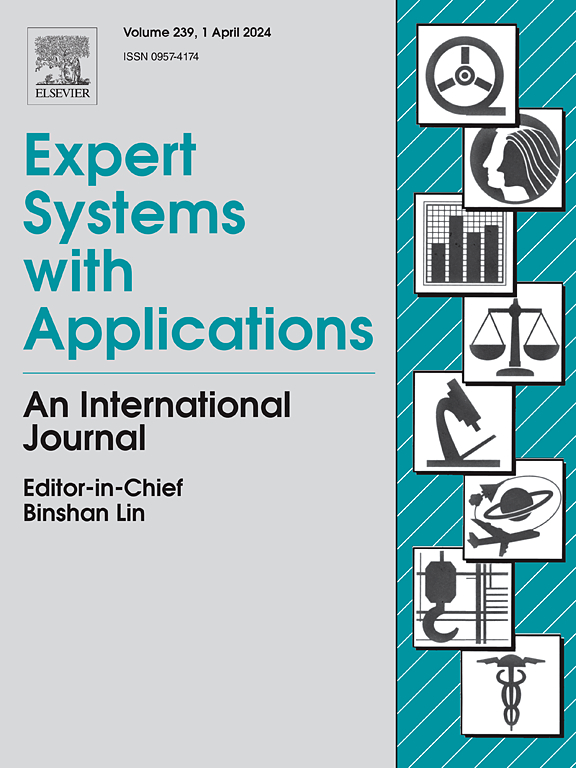Goal-driven long-term marine vessel trajectory prediction with a memory-enhanced network
IF 7.5
1区 计算机科学
Q1 COMPUTER SCIENCE, ARTIFICIAL INTELLIGENCE
引用次数: 0
Abstract
Enhancing the precision of marine vessel trajectory prediction (VTP) is crucial for collision avoidance, intelligent navigation, and crisis alert in maritime safety. Most RNN-based methods typically face memory weakening issues during long-sequence propagation, leading to the discarding of some key features and significant predictive error accumulation over extended time intervals. Moreover, they struggle to forecast those complex trajectories involving abnormal maneuvers such as sudden acceleration or deceleration, sharp turns, or U-turns, resulting in poor generalization capabilities. To address these pivotal challenges, this paper proposes a novel Memory-Enhanced Network (MENet) for VTP, catering to intricate sailing intention modeling with long-term motion pattern perception. Specifically, we design an embeddable memory-enhanced block (MEB) that adaptively aggregates memory vectors across multiple temporal scales to assist in better prediction without disrupting the original backbone structure. Also, a goal-driven vessel trajectory decoder (GD-VTD) is developed to facilitate reliable model inferences by combining vessel type and destination variables as guidance information. Furthermore, we reconstruct the traditional loss function based on relative distance metrics, incorporating predicted headings into the optimization process to generate consistent trajectories that comply with realistic vessel dynamics. Ultimately, MENet could learn diverse sailing intentions by assembling the above parts to predict long-term marine vessel trajectories. Extensive experimental results on Automatic Identification System (AIS) datasets from three coastal regions in the US demonstrate that our model exhibits superior accuracy and robustness compared to other baselines. Specifically, on the Everglades Port (EP) dataset, our method reduces MAE, RMSE, and MAPE errors by 7.25%, 7.82%, and 7.62%, respectively, compared to the existing best results during this experiment. This is another piece of evidence for the effectiveness of goal-driven trajectory prediction in real-world maritime settings.
利用记忆增强网络进行目标驱动的长期海洋船舶轨迹预测
提高海洋船舶轨迹预测(VTP)的精度对于避免碰撞、智能导航和海上安全危机预警至关重要。大多数基于 RNN 的方法在长序列传播过程中通常会面临记忆弱化问题,导致一些关键特征被丢弃,并在较长的时间间隔内积累大量预测误差。此外,它们很难预测那些涉及异常机动(如突然加速或减速、急转弯或 U 形转弯)的复杂轨迹,导致泛化能力差。为了应对这些关键挑战,本文提出了一种用于 VTP 的新型记忆增强网络(MENet),以满足复杂的航行意图建模和长期运动模式感知的需要。具体来说,我们设计了一个可嵌入的记忆增强块(MEB),它能在多个时间尺度上自适应地聚合记忆向量,从而在不破坏原始主干结构的情况下帮助进行更好的预测。此外,我们还开发了目标驱动的船只轨迹解码器(GD-VTD),通过将船只类型和目的地变量作为指导信息,促进可靠的模型推断。此外,我们基于相对距离指标重建了传统的损失函数,将预测航向纳入优化过程,以生成符合现实船舶动态的一致轨迹。最终,MENet 可以通过组合上述部分来学习不同的航行意图,从而预测长期的海洋船舶轨迹。在美国三个沿海地区的自动识别系统(AIS)数据集上进行的大量实验结果表明,与其他基准相比,我们的模型具有更高的准确性和鲁棒性。具体而言,在 Everglades 港口(EP)数据集上,与该实验中现有的最佳结果相比,我们的方法将 MAE、RMSE 和 MAPE 误差分别降低了 7.25%、7.82% 和 7.62%。这再次证明了目标驱动轨迹预测在实际海事环境中的有效性。
本文章由计算机程序翻译,如有差异,请以英文原文为准。
求助全文
约1分钟内获得全文
求助全文
来源期刊

Expert Systems with Applications
工程技术-工程:电子与电气
CiteScore
13.80
自引率
10.60%
发文量
2045
审稿时长
8.7 months
期刊介绍:
Expert Systems With Applications is an international journal dedicated to the exchange of information on expert and intelligent systems used globally in industry, government, and universities. The journal emphasizes original papers covering the design, development, testing, implementation, and management of these systems, offering practical guidelines. It spans various sectors such as finance, engineering, marketing, law, project management, information management, medicine, and more. The journal also welcomes papers on multi-agent systems, knowledge management, neural networks, knowledge discovery, data mining, and other related areas, excluding applications to military/defense systems.
 求助内容:
求助内容: 应助结果提醒方式:
应助结果提醒方式:


